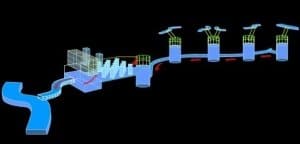Hidden among Tokyo high-rises and neon lights, you can find yourself back in the 70s of Japan, in the so called Yokocho alleys, which are welcoming corners for anyone looking for a bite and experience the deeper understanding of the localness of Tokyo, with yakitori shops, izakaya and small bars.
What defines those alleys is the size of the bars and eateries with only enough room inside for 4 or 5 barstools.
Entering those miniature hole along the alley for the first time can be disconcerting, especially if you don’t speak Japanese. Fortunately, some places in the bigger ones have English and Chinese menus.
Here is short list of some of the best Yokocho in Tokyo:
– Omoide (memory lane), also called Gokiburi Yokocho (cockroach alley) or Shomben Yokocho (piss alley) with a selection of Japanese cuisine available at the 60 restaurants within the 4 lanes located on the western side of Shinjuku Station. map
– Nonbei (drunkard alley), 2 small hidden lanes not far from Shibuya Station, with food like oden or snack food that goes easily with the drink, very similar to the old yatai style. map
– Ebisu opened in 1998 in a decaying 1970s apartment block in Ebisu, is now a lively izakaya arcade, with plenty to offer, like western-style wine bars, sushi shops, oden or grills. map
You can also join us with our Gourmet and Tastes of Japan for other rare hidden Yokocho.



